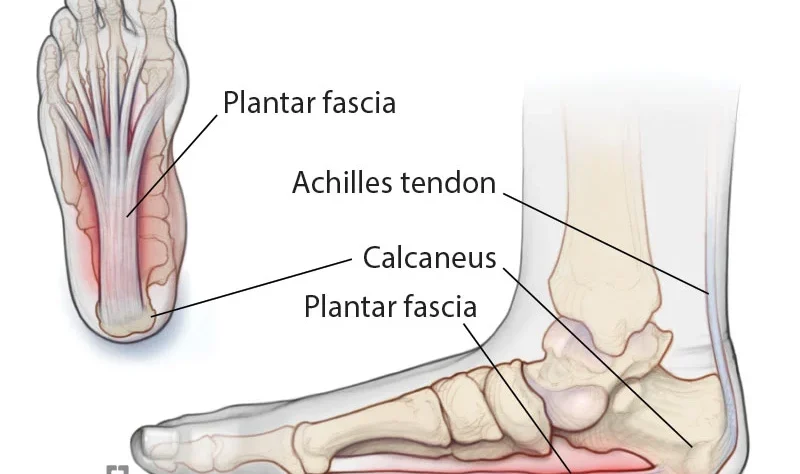Plantar fasciitis is a common condition that causes pain in the heel and bottom of the foot. It is caused by inflammation of the plantar fascia, a thick band of tissue that runs across the bottom of the foot, connecting the heel bone to the toes. This condition can be so severe that it makes walking difficult or impossible. In this guide, we’ll discuss the causes, symptoms, and treatment options for plantar fasciitis. If you think plantar fasciitis so bad I can’t walk then it is helpful for you:
Causes of Plantar Fasciitis
Plantar fasciitis is usually caused by repetitive strain on the plantar fascia. Some of the common causes include:
Overuse: Activities that involve a lot of standing, running, or jumping can put a lot of stress on the plantar fascia, leading to inflammation and pain.
Foot Mechanics: Flat feet, high arches, and other foot problems can cause the plantar fascia to become overstretched and inflamed.
Age: As we age, the plantar fascia becomes less flexible, making it more prone to injury.
Obesity: Being overweight puts extra strain on the plantar fascia, increasing the risk of inflammation and pain.
Symptoms of Plantar Fasciitis
The main symptom of plantar fasciitis is pain in the heel and bottom of the foot. The pain is usually worse in the morning or after long periods of rest, and it may improve with activity. Other symptoms may include:
- Stiffness in the foot and ankle.
- Swelling in the bottom of the foot.
- Tingling or numbness in the foot.
- Pain that worsens when walking or standing for long periods.
Treatment Options for Plantar Fasciitis
Fortunately, there are several treatment options for plantar fasciitis, including:
Rest: One of the most important things you can do for plantar fasciitis is to rest your foot as much as possible. Avoid activities that exacerbate the pain, such as running or jumping.
Ice: Applying ice to the affected area can help reduce inflammation and pain. Apply ice for 15-20 minutes at a time, several times a day.
Stretching: Gentle stretching exercises can help relieve pain and improve flexibility in the foot. Some common stretches include calf stretches, towel stretches, and plantar fascia stretches.
Orthotics: Custom-made shoe inserts can help correct foot mechanics and reduce strain on the plantar fascia.
Medications: Over-the-counter pain relievers, such as ibuprofen or acetaminophen, can help reduce pain and inflammation.
Physical therapy: If conservative treatment options are not effective, physical therapy may be recommended. A physical therapist can help you develop an exercise program to improve foot strength and flexibility.
Surgery: In rare cases, surgery may be necessary to treat severe cases of plantar fasciitis.
Preventing Plantar Fasciitis
Prevention is the best way to avoid plantar fasciitis. Some tips for preventing this condition include:
- Wearing proper shoes that provide good arch support.
- Avoiding high-impact activities that put a lot of stress on the feet.
- Maintaining a healthy weight reduces the strain on the plantar fascia.
- Stretching regularly to keep the foot muscles and tendons flexible.
- Gradually increasing the intensity of exercise to avoid sudden changes in activity levels.

